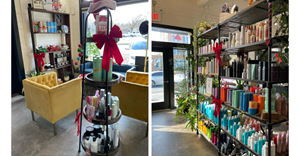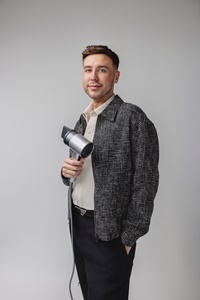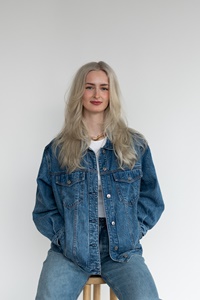
Courtesy of Viviscal
As a hairstylist, you’ve seen firsthand that hair grows in an endless variety of colors and textures. But did you know that all hair is basically the same in structure? If it’s been a minute since you’ve studied hair anatomy, you’re in luck because today,we’re brushing up on hair science. Many clients struggle with hair loss, breakage, or stunted hair growth. Understanding hair science will help you make the best recommendations for your clients to keep their hair in optimal health and achieve their hair goals.
What is Hair Made of?
Hair is mostly made up of a hard protein called keratin, which is the same protein that also makes up our hair and nails. Hair keratin is formed by amino acids that are linked together by cysteine disulfide bridges. Amino acids come from the protein in foods we eat, which is why it’s so important to eat a diet rich in lean proteins for healthy hair growth.
Basic Hair Anatomy: The Hair Follicle & Hair Shaft
Each hair is comprised of a hair follicle and a hair shaft. The hair follicle, also known as the root, is the living portion of the hair that resides beneath the skin. This is where hair growth occurs and it’s also what anchors the hair shaft to the scalp.The hair follicle itself is made up of four key structures:
1. Bulb
The bulb at the base of the hair follicle contains stem cells that divide to form the hair shaft as well as melanocytes, which produce the pigment that gives hair its natural color. The bulb is linked to the scalp’s blood vessels, which deliver all the necessary nutrients for hair growth. The bulb also receives hormone signals that regulate hair growth.
2. Sebaceous Gland
The hair follicle has an oil gland that produces the sebum or oil that keep the scalp and hair shaft hydrated and healthy.
3. Inner and Outer Sheath
These protein structures protect the hair follicle.
4. Arrector Pili Muscles
The arrector pili are very small muscles that are attached to the hair follicles. When the arrector pili contract,it causes hair to literally stand on its end―this is the very mechanism that leads to goosebumps!
The hair shaft is the visible part of the hair that extends outside of the skin. The hair shaft is the part of the hair that is non-living, which is why haircuts don’t hurt.The hair shaft itself is made up of three parts:

1. Medulla
A honeycomb-like core made up of sugars and amino acids.
2. Cortex
A hard keratin layer that surrounds the medulla.
3. Cuticle
An outer protective layer made up of overlapping keratin scales.
How Hair Anatomy Can Affect Your Client’s Hair Growth
Now that you’ve brushed up on your hair anatomy, let’s talk about how you can use hair science to help your clients. The two main anatomical reasons why clients struggle with hair growth are damage to the hair shaft and a lack of nutrients. Let’s examine these further:
Issue #1: Damage to the hair shaft leads to breakage. Through styling and various chemical processes, the scales of the cuticle layer can become frayed and damaged. When this protective layer becomes compromised, the hair becomes brittle and can break off. Breakage limits hair length and makes hair growth seem like it’s slowed down or stopped altogether. To fix this issue, you can recommend protein treatments to help repair and strengthen the hair shaft. Advise your client on healthy hair care habits like using heat protectants and deep conditioning treatments.
Issue #2: The hair follicle isn’t receiving enough nutrients. If the bulb of the hair follicle isn’t receiving adequate nutrition from your client’s diet, then the hair follicle won’t be able to grow hair efficiently. We suggest recommending Viviscal PROHair Growth Supplements, which provide essential nutrients to nourish thinning hair and promotes existing hair growth from within. Viviscal PRO is the most clinically proven hair growth supplement in the US with ten published clinical studies backing its effectiveness. It can take up to six months for your client to see results, but most clients notice thicker, fuller hair in just three.


.png?mw=300&mh=300&as=1)
.png?mw=300&mh=300&as=1)



